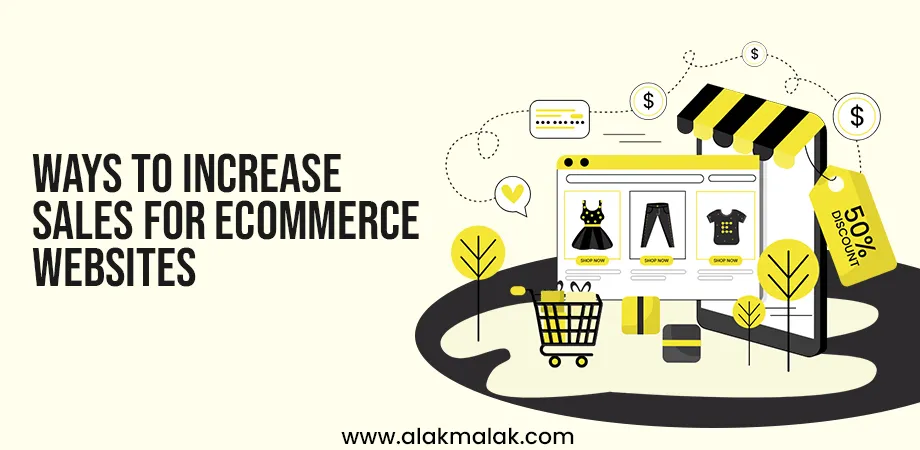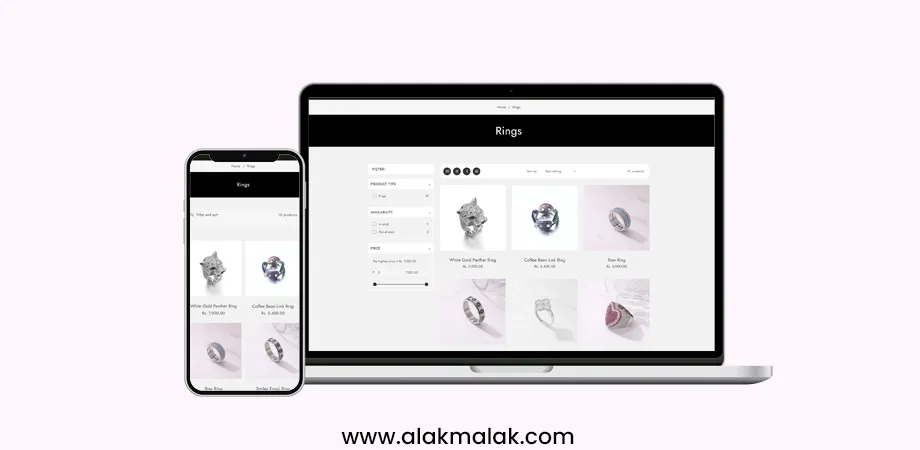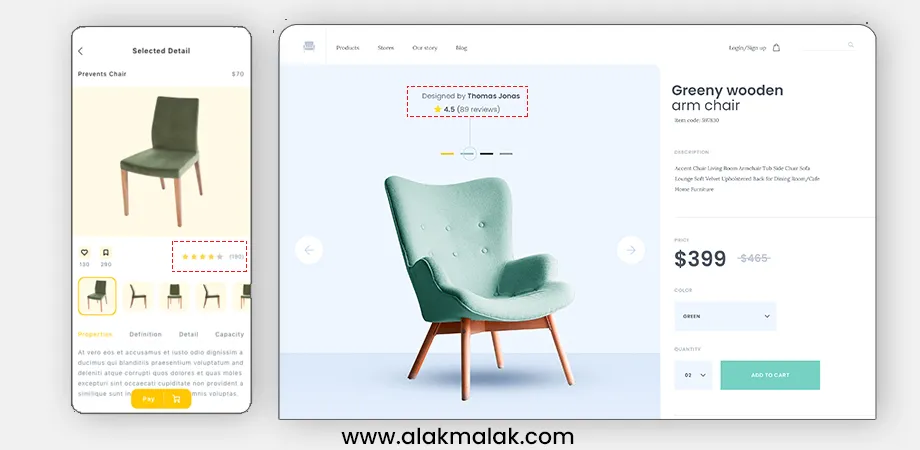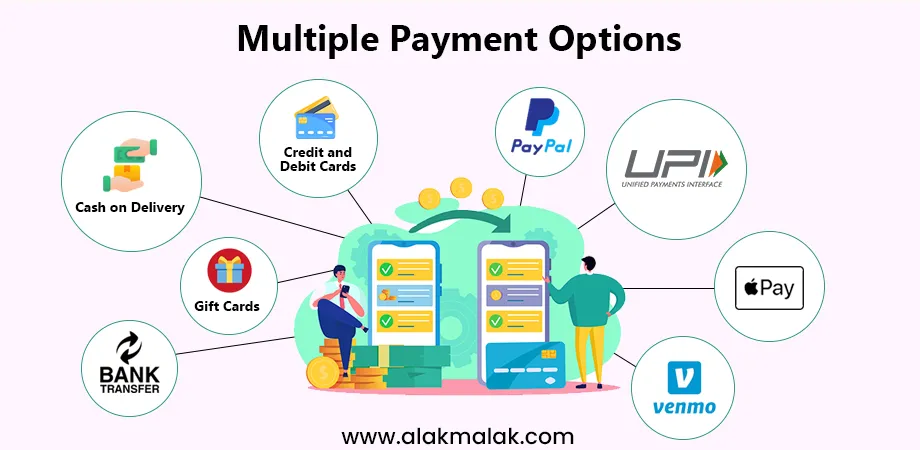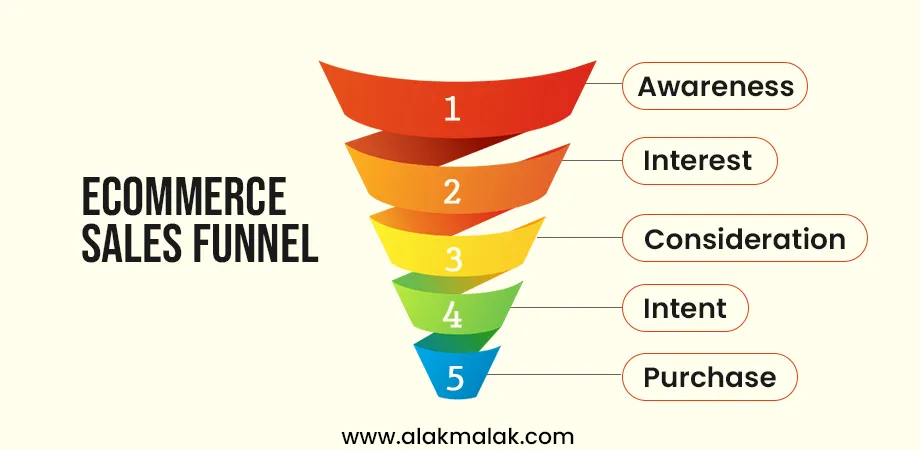Are you an online business owner struggling to boost your sales? You’re not alone. In today’s crowded digital marketplace, it can be challenging to stand out and attract customers. But don’t worry, we’ve got your back.
The truth is, having an eCommerce website is just the first step. To truly succeed, you need to implement smart strategies that will captivate your audience and keep them coming back for more. That’s where our expertise comes in.
With over 18 years of experience as an eCommerce website development company, we’ve helped countless businesses create high-performing eCommerce websites that drive sales through the roof. We’ve seen firsthand what works and what doesn’t, and we’re here to share our insider tips with you.
In this comprehensive guide, we’ll walk you through 20 proven tactics to increase sales for eCommerce websites. From optimizing for mobile and creating compelling product content to leveraging the latest technologies like augmented reality and voice commerce, we’ve got you covered.
So, whether you’re just starting out or looking to take your eCommerce game to the next level, buckle up and get ready to discover game-changing strategies that will give you a competitive edge in the digital landscape.
Ways to Increase Sales for eCommerce Websites
TABLE OF CONTENT
Must-Have Strategies for E-commerce Success
1. Optimize for Mobile
2. High-Quality Product Content
3. Seamless Checkout
4. Customer Reviews and Ratings
5. Multiple Payment Options
Trending Tactics: How Today’s Top Stores are Crushing Sales
6. Personalization
7. Social Commerce
8. Sales Funnel
9. Omnichannel Marketing
10. Live Chat & Chatbots
11. User-Generated Content (UGC)
Future Forward: The Cutting-Edge Technologies Shaping E-commerce
12. Augmented Reality (AR) & Virtual Reality (VR)
13. Voice Commerce
14. Metaverse Integration
15. Blockchain Technology
16. NFTs in eCommerce
Untapped Opportunities: Unique Strategies to Stand Out from the Crowd
17. Community Building
18. Loyalty Programs with Gamification
19. Interactive Product Demos
20. Partner with Micro-Influencers
21. Sustainability Initiatives
Must-Have Strategies for E-commerce Success :
1. Optimize for Mobile
More and more people are using their smartphones and tablets to browse and shop online, so having a mobile-friendly website is crucial. A mobile-optimized website provides a seamless and user-friendly experience, making it easier for customers to navigate, view products, and complete purchases.
By ensuring a smooth mobile experience, you reduce the likelihood of customers abandoning their carts due to frustration, leading to higher conversion rates and sales.
Invest in responsive web design, which automatically adjusts your website’s layout and content based on the user’s device. Test your site on various mobile devices and screen sizes to ensure optimal performance.
Real-world example: Amazon’s mobile app and website are highly optimized for seamless browsing and purchasing on-the-go, contributing significantly to their overall sales.
2. High-Quality Product Content
Detailed and engaging product descriptions, images, and videos help customers better understand and appreciate your offerings. High-quality content provides customers with the information they need to make informed purchasing decisions, increasing their confidence and satisfaction.
Well-crafted product content can effectively showcase the features, benefits, and value of your products, ultimately persuading customers to buy.
Invest in professional product photography, create detailed yet concise descriptions highlighting key features and benefits, and consider incorporating product videos or 360-degree views.
Real-world example: IKEA’s website features high-resolution product images, detailed descriptions, and augmented reality functionality, allowing customers to visualize how furniture would look in their homes.
3. Seamless Checkout
A complicated or lengthy checkout process can lead to high cart abandonment rates, costing you potential sales. A streamlined checkout experience reduces friction and frustration, making it easier for customers to complete their purchases.
By minimizing barriers and simplifying the checkout process, you increase the likelihood of customers following through with their purchases, boosting your conversion rates and sales.
Offer guest checkout options, minimize form fields, integrate secure and trusted payment gateways, and display clear progress indicators throughout the checkout process.
Real-world example: Zappos’ one-page checkout process, with minimal form fields and a clear progress bar, provides a hassle-free experience for customers, contributing to their high conversion rates.
4. Customer Reviews and Ratings
Customer reviews and ratings provide social proof and valuable insights, helping potential buyers make informed decisions. Reviews and ratings increase trust and confidence in your products, as customers can learn from the experiences of others.
Positive reviews and ratings can significantly influence purchasing decisions, leading to higher conversion rates and sales.
Encourage customers to leave reviews by sending follow-up emails after purchases, and prominently display review summaries and ratings on product pages.
Real-world example: Amazon’s extensive customer review system, with detailed ratings and feedback, has become a crucial decision-making tool for millions of shoppers worldwide.
5. Multiple Payment Options
Offering a variety of payment methods caters to diverse customer preferences and increases the chances of completing a sale. Customers appreciate having multiple payment options, as it provides convenience and flexibility based on their preferred methods.
By providing a range of trusted and secure payment options, you reduce potential barriers and make it easier for customers to complete their purchases, leading to higher conversion rates.
Integrate popular payment gateways like PayPal, Apple Pay, and major credit card processors, ensuring a secure and trusted checkout experience.
Real-world example: Walmart’s online store accepts a wide range of payment methods, including credit cards, debit cards, gift cards, PayPal, and even cash at participating stores, catering to a diverse customer base.
Remember, these strategies are essential for creating a positive and seamless shopping experience, which ultimately leads to increased customer satisfaction, loyalty, and sales for your eCommerce business.
Trending Tactics: How Today’s Top Stores are Crushing Sales:
6. Personalization
Personalized experiences cater to individual preferences, making customers feel valued and understood. Personalization enhances relevance and convenience, providing tailored recommendations and offers that resonate with each customer.
By delivering personalized experiences, you increase the likelihood of customers finding products they’re interested in, leading to higher engagement and conversion rates.
Collect and analyze customer data, such as browsing history, past purchases, and abandoned carts. Use this data to deliver personalized product recommendations, targeted marketing campaigns, and customized offers.
Real-world example: Amazon’s personalized recommendations and “Customers who bought this item also bought” feature leverage customer data to suggest relevant products, driving increased sales.
7. Social Commerce
Social media platforms have become integral parts of many people’s lives, presenting opportunities for seamless shopping experiences. Social commerce allows customers to discover, explore, and purchase products without leaving their favorite social media apps, providing convenience and a seamless shopping journey.
By meeting customers where they spend their time (social media), you can capitalize on impulse purchases, influencer marketing, and social proof, ultimately boosting sales.
Integrate shoppable posts, product tagging, and in-app checkout capabilities on popular social media platforms like Instagram and TikTok. Leverage social media advertising and influencer collaborations.
Real-world example: Nike’s shoppable Instagram posts and influencer collaborations have enabled customers to easily purchase products directly from the app, driving social commerce sales.
8. Sales Funnel
A well-designed sales funnel is crucial because it guides customers through the entire buying journey, from initial awareness to the final purchase. It helps streamline the process, eliminate friction points, and maximize conversions at each stage.
For users, a sales funnel provides a seamless and intuitive experience. It ensures they receive the right information and prompts at the right time, making it easier for them to progress through the buying process without feeling overwhelmed or confused.
By optimizing the sales funnel, you can address potential roadblocks and minimize drop-offs at each stage. This results in more customers successfully completing their purchases, leading to increased sales and revenue for your eCommerce business.
To implement an effective sales funnel, you need to define the stages (e.g., awareness, interest, desire, action) and map out the customer journey. Then, create targeted content, calls-to-action, and offers for each stage. Additionally, track and analyze data to identify areas for improvement continually.
A real-world example:
Amazon is a prime example of a company that has mastered the sales funnel. From product recommendations based on browsing history (awareness) to personalized email campaigns and retargeting ads (interest and desire), to a streamlined checkout process (action), Amazon’s sales funnel effectively guides customers through the entire buying journey, contributing significantly to their eCommerce success.
9. Omnichannel Marketing
Customers interact with brands across multiple touchpoints, and a consistent omnichannel presence ensures a cohesive and memorable experience. Omnichannel marketing provides a seamless and integrated brand experience, regardless of the channel or device customers use.
By delivering a consistent brand message and experience across all channels, you reinforce brand recognition, build trust, and ultimately influence purchasing decisions, leading to higher sales.
Develop a comprehensive omnichannel strategy that encompasses social media, email marketing, influencer collaborations, retargeting ads, and more. Ensure consistent branding, messaging, and user experiences across all channels.
Real-world example: Sephora’s omnichannel approach, including a robust online presence, mobile app, in-store experiences, and targeted email campaigns, provides a seamless and engaging customer journey, driving sales across all touchpoints.
10. Live Chat & Chatbots
Customers often have questions or concerns that, if addressed promptly, can make the difference between a completed purchase or an abandoned cart. Live chat and chatbots provide instant support and assistance, enhancing the customer experience and building trust and confidence in the brand.
By offering real-time support and addressing customer queries, you can help overcome potential obstacles, reduce cart abandonment, and ultimately boost conversion rates and sales.
Integrate live chat software or chatbot solutions on your website, allowing customers to easily initiate conversations and receive prompt assistance. Train chatbots with frequently asked questions and ensure seamless handoffs to human support when needed.
Real-world example: Zappos’ dedicated customer service team, available via live chat, phone, and email, has become a hallmark of their brand, contributing to their exceptional customer satisfaction and loyalty.
11. User-Generated Content (UGC)
UGC, such as customer photos and videos featuring your products, provides social proof and authenticity, influencing purchasing decisions. UGC helps customers visualize how products look and perform in real-life situations, building trust and confidence in their potential purchases.
By leveraging the power of social proof and authenticity, UGC can significantly influence purchasing decisions, leading to higher conversion rates and sales.
Encourage customers to share photos and videos using your products on social media by running contests, offering incentives, or creating dedicated hashtags. Curate and feature UGC on your website and social media channels.
Real-world example: GoPro’s user-generated content strategy, which showcases customers’ action-packed videos and photos, has become a powerful marketing tool, inspiring potential buyers and driving sales of their action cameras.
These trending tactics leverage the power of personalization, social media, omnichannel experiences, real-time support, and user-generated content to create engaging and seamless shopping experiences, ultimately driving increased sales for eCommerce businesses.
Future Forward: The Cutting-Edge Technologies Shaping E-commerce
12. Augmented Reality (AR) & Virtual Reality (VR)
AR and VR provide immersive and interactive shopping experiences, allowing customers to visualize products in real-life scenarios before making a purchase. These technologies, combined with Machine Learning and AI Development Services, enhance the customer experience by reducing uncertainty and increasing confidence in purchasing decisions, leading to higher satisfaction and loyalty.
By offering realistic product previews and virtual try-on experiences, AR and VR can reduce returns and increase conversions, ultimately boosting sales.
Integrate AR and VR capabilities into your website or mobile app, allowing customers to virtually try on clothing, see furniture in their homes, or interact with products in 3D.
Real-world example: IKEA’s Place app uses AR technology to let customers virtually place furniture in their homes, helping them visualize how pieces would look and fit before making a purchase.
13. Voice Commerce
With the increasing popularity of smart speakers and voice assistants, voice commerce provides a convenient and hands-free way for customers to search and shop for products. Voice commerce enhances accessibility and ease of use, allowing customers to multitask and shop seamlessly using voice commands.
By optimizing for voice search and integrating with smart speakers, you can capture new sales opportunities and provide a frictionless shopping experience, leading to increased conversions.
Optimize your website for voice search by using natural language and conversational phrases. Integrate with smart speaker platforms like Amazon Alexa and Google Assistant to enable voice-based product search and purchasing.
Real-world example: Amazon’s voice commerce capabilities with Alexa allow customers to easily search for products, track orders, and make purchases using voice commands, providing a seamless shopping experience.
14. Metaverse Integration
As the concept of the metaverse continues to evolve, it presents opportunities for businesses to create immersive and interactive virtual shopping experiences, tapping into new markets and customer engagement channels. Metaverse integration allows customers to explore and interact with products in a virtual environment, providing a unique and engaging shopping experience that could influence purchasing decisions.
By establishing a presence in the metaverse, you can reach new audiences, create buzz and excitement around your brand, and potentially drive sales through virtual experiences and transactions.
As metaverse platforms and standards emerge, explore opportunities to create virtual storefronts, product showcases, or interactive experiences within these virtual worlds, leveraging emerging technologies like VR and AR.
Real-world example: Nike has already taken steps into the metaverse by creating a virtual world called “Nikeland” on the Roblox platform, where users can play games, try on virtual sneakers, and engage with the brand in a new way.
15. Blockchain Technology
Blockchain technology offers enhanced security, transparency, and traceability for transactions and supply chain operations, which can build trust and confidence among consumers. By leveraging blockchain and choosing to hire blockchain developers, customers can have greater assurance about the authenticity of products, the ethical sourcing of materials, and the security of their personal and financial information.
Implementing blockchain can increase consumer trust and confidence in your brand, potentially leading to higher conversions and sales, particularly for high-value or luxury items prone to counterfeiting.
Explore the integration of blockchain solutions for secure transactions, supply chain tracking, and product authentication, potentially partnering with blockchain service providers or consortiums.
Real-world example: Everledger, a blockchain-based platform, has been used by companies like Brilliant Earth to track diamonds from the mine to the retail store, providing transparency and ensuring ethical sourcing.
16. NFTs in eCommerce
Non-fungible tokens (NFTs) offer a way to create unique digital assets or limited-edition products, appealing to collectors and customers seeking exclusivity and authenticity. NFTs can provide customers with a sense of ownership and exclusivity, as well as potential investment opportunities, enhancing the perceived value of products or digital assets.
By offering limited-edition NFTs or incorporating them into physical products, you can tap into the growing NFT market, potentially driving sales and creating new revenue streams.
Partner with NFT platforms or marketplaces to create and sell unique digital assets or limited-edition products associated with NFTs. Explore ways to integrate NFTs with physical products or offer exclusive experiences tied to NFT ownership.
Real-world example: Nike has launched a range of virtual sneakers as NFTs, called “CryptoKicks,” which can be collected, traded, and potentially “worn” in virtual environments, tapping into the growing NFT market.
These cutting-edge technologies and trends have the potential to revolutionize the eCommerce landscape, providing innovative and immersive shopping experiences, enhancing trust and transparency, and creating new avenues for customer engagement and revenue generation.
Untapped Opportunities: Unique Strategies to Stand Out from the Crowd
17. Community Building
Building an engaged community around your brand can foster brand loyalty, advocacy, and a sense of belonging among customers. Being part of a community allows customers to connect with like-minded individuals, share experiences, and feel a sense of belonging to something larger than just a transactional relationship.
A strong and engaged community can lead to increased brand awareness, word-of-mouth marketing, and customer retention, ultimately driving more sales.
Create online forums, social media groups, or dedicated community platforms where customers can interact, ask questions, and share their experiences. Encourage user-generated content, host virtual events, and facilitate discussions.
Real-world example: Sephora’s Beauty Insider Community is a vibrant online space where makeup enthusiasts can connect, share tips, and participate in exclusive events, fostering loyalty and engagement.
18. Loyalty Programs with Gamification
Loyalty programs incentivize repeat purchases and customer retention, while gamification elements add an element of fun and engagement. Gamified loyalty programs provide customers with a sense of achievement, rewards, and a more entertaining shopping experience, encouraging them to continue engaging with your brand.
By offering rewards, discounts, and incentives through a gamified loyalty program, customers are motivated to make more purchases, leading to increased sales and customer lifetime value.
Develop a loyalty program with tiered rewards, points systems, and exclusive perks. Incorporate gamification elements like challenges, leaderboards, badges, or virtual currencies to make the program more engaging and rewarding.
Real-world example: Starbucks’ Rewards program incorporates gamification by allowing customers to earn “stars” for purchases, which can be redeemed for free drinks or other rewards, creating a sense of accomplishment and encouragement for continued patronage.
19. Interactive Product Demos
Interactive product demos provide customers with a hands-on, immersive experience, helping them better understand and appreciate the features and functionality of your products. By allowing customers to virtually interact with and explore products, you can reduce uncertainty, increase confidence in purchasing decisions, and provide a more engaging and informative shopping experience.
Interactive demos can help customers visualize how products work and how they might benefit from them, leading to increased product understanding and potentially higher conversion rates.
Integrate interactive product demos on your website, allowing customers to virtually “try” products, rotate 3D models, and explore features through simulations or guided walkthroughs.
Real-world example: Sony’s interactive product demos on their website allow customers to experience features like camera settings, zoom capabilities, and image quality through virtual simulations, helping inform purchasing decisions.
20. Partner with Micro-Influencers
Micro-influencers are individuals with smaller but highly engaged followings, often seen as more authentic and relatable by their audiences. Micro-influencer partnerships can introduce your brand to new audiences in a more organic and trustworthy manner, as recommendations come from individuals perceived as more genuine and credible.
By leveraging the influence and trust micro-influencers hold with their audiences, you can effectively promote your products, drive brand awareness, and ultimately influence purchasing decisions, leading to increased sales.
Identify micro-influencers in your niche or industry who align with your brand values and target audience. Collaborate with them on sponsored content, product reviews, or giveaways, leveraging their authentic voices and engaged followings.
Real-world example: Daniel Wellington, a watch brand, has successfully partnered with numerous micro-influencers across various niches, from fashion to travel, resulting in increased brand exposure and sales.
21. Sustainability Initiatives
Consumers are becoming increasingly conscious of environmental and social impacts, and prioritizing sustainable and ethical business practices. Highlighting your sustainability initiatives can resonate with environmentally and socially conscious customers, building trust and a positive brand perception.
By addressing the growing demand for sustainable products and practices, you can attract and retain customers who prioritize environmental responsibility and ethical practices, potentially leading to increased sales and customer loyalty.
Implement sustainable practices throughout your supply chain and operations, such as using eco-friendly packaging, sourcing from ethical suppliers, offsetting carbon emissions, and supporting environmental or social causes. Prominently showcase these efforts on your website and marketing materials.
Real-world example: Allbirds, a sustainable footwear brand, has built its brand around eco-friendly materials like merino wool and sugarcane-based foam, resonating with environmentally conscious consumers and driving significant sales growth.
By implementing these unique strategies, you can differentiate your eCommerce business, foster customer loyalty and advocacy, and tap into new revenue streams, ultimately gaining a competitive advantage in the ever-evolving digital landscape.
Tools and Resources
To help you implement the strategies discussed in this blog and take your eCommerce sales to new heights, we’ve compiled a list of helpful tools and resources:
Website Building and Optimization Tools:
Wix – A user-friendly platform for creating stunning eCommerce websites.
Google PageSpeed Insights (https://pagespeed.web.dev/) – A free tool to analyze and optimize your website’s speed and performance.
Product Photography and Video Tools:
Canva – A free graphic design tool that can help you create professional-looking product images and videos.
Pexels and Unsplash – Free stock photo libraries that offer high-quality images for commercial use.
Email Marketing and Automation Tools:
Mailchimp – A popular email marketing platform with a free plan for small businesses.
Omnisend – An all-in-one platform for email marketing, SMS, and automation.
Social Media Management Tools:
Hootsuite – A comprehensive social media management platform for scheduling posts, monitoring conversations, and analyzing performance.
Later – A visual marketing platform specifically designed for Instagram scheduling and analytics.
Customer Service and Live Chat Tools:
Tidio – A free live chat and chatbot solution for small businesses.
HubSpot Service Hub – A customer service platform with live chat, ticketing, and knowledge base features.
Free Learning Resources:
Google Digital Garage – Free online courses and resources for building digital skills.
Shopify Academy – Free eCommerce training courses and certifications from Shopify.
Remember, these are just a few examples, and you should research and choose the tools and resources that best fit your specific needs and budget.
Case Study: FitGear Inc.
FitGear Inc. is a leading online retailer of high-quality fitness apparel and accessories. As the demand for athleisure wear surged, the company faced increasing competition from established brands and new players in the market.
To stay ahead of the curve and drive sales, FitGear implemented several strategies discussed in this blog:
- Mobile Optimization: FitGear revamped their website to provide a seamless mobile experience, ensuring that customers could easily browse, shop, and checkout on-the-go.
- Personalization: By leveraging customer data and browsing history, FitGear personalized product recommendations and targeted marketing campaigns, leading to increased engagement and conversions.
- Social Commerce: The company integrated shoppable Instagram posts and leveraged influencer partnerships, tapping into the power of social media and user-generated content.
- Live Chat Support: FitGear implemented a live chat feature on their website, providing real-time assistance to customers and addressing any concerns or queries promptly.
- Loyalty Program with Gamification: To foster customer loyalty, FitGear launched a gamified loyalty program, offering rewards, challenges, and a sense of achievement for repeat purchases.
The results were remarkable. Within the first year of implementing these strategies, FitGear saw a 25% increase in overall sales, a 35% boost in mobile conversions, and a 20% reduction in cart abandonment rates. Additionally, the company’s social media following grew exponentially, and customer satisfaction ratings soared.
Key Learnings:
- Prioritizing a seamless mobile experience is crucial in today’s on-the-go world.
- Personalized experiences and targeted marketing resonate with customers and drive engagement.
- Leveraging social media and influencer partnerships can effectively reach new audiences and drive sales.
- Providing excellent customer service through live chat support enhances the overall shopping experience.
- Gamified loyalty programs foster customer retention and encourage repeat purchases.
By adopting a customer-centric approach and embracing innovative strategies, FitGear Inc. successfully differentiated itself in a crowded market and achieved remarkable sales growth.
Beyond Sales: Building a Successful Ecommerce Empire
In today’s fast-paced digital landscape, an eCommerce website is no longer just a sales channel – it’s a gateway to boundless growth opportunities. Throughout this comprehensive guide, we’ve explored a diverse range of strategies, tactics, and cutting-edge technologies that can propel your online business to new heights.
From optimizing the essentials, such as mobile-friendly design and seamless checkout experiences, to leveraging the power of personalization, social commerce, and user-generated content, the strategies we’ve covered are proven to captivate customers and drive sales. Moreover, by embracing emerging technologies like augmented reality, voice commerce, and even the metaverse, you can future-proof your business and stay ahead of the curve.
However, true success lies in adopting a customer-centric approach that fosters loyalty, advocacy, and a sense of community around your brand. Initiatives like interactive product demos, micro-influencer partnerships, and sustainability efforts not only differentiate your business but also resonate with modern consumers’ values and preferences.
As you embark on your eCommerce journey, remember that continuous innovation and a willingness to adapt are paramount. The digital landscape is ever-evolving, and those who embrace change and prioritize exceptional customer experiences will be the ones to thrive.
If you’re ready to take your eCommerce business to new heights, we encourage you to reach out for a consultation. Our team of experts is dedicated to helping you develop a comprehensive eCommerce strategy tailored to your unique goals and needs. Together, we can unlock the full potential of your online presence and achieve sustainable growth in the dynamic world of eCommerce.

 By: Rushik Shah
By: Rushik Shah
